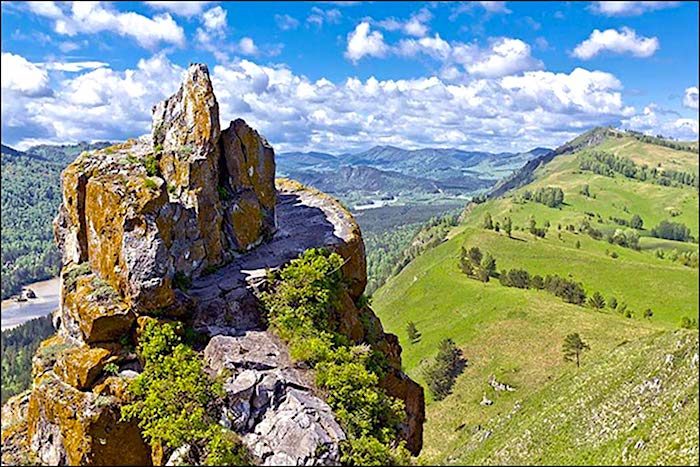
© Ancient-origins.net
Giant ramparts guarded Altai Mountains against attack from the north, says leading archaeologist Professor Andrey Borodovsky.
The wall complex - now almost hidden to the naked eye - is believed to date from a long era that also saw such constructions as the Great Wall of China and Hadrian's Wall.Concealed under thick layers of turf are huge stones put in place by ancient man, says the scientist.
Six rows of a parallel wall system limited access to the Altai Mountain complex from the north via the valley of the Katun River. Their width is a substantial ten meters with an impressive height of up to eight meters.
It is not known who built the giant ramparts. 'To the east of these walls is a fairly wide passage, which is limited at the mountainside by another series of walls, oriented west-east across the Katun valley,' he said.
There are nine walls adjacent to the mountain slope.Professor Andrey Borodovsky said: 'These walls were clearly made to cut off crowds of people, and make them go through a narrow passage in the direction chosen by the creators of the (construction).'
In this way access from the steppes to the mountains - the home of ancient civilizations, for example of the Pazyryk people - could be controlled.
Some of the walls were destroyed by the construction of the Chuya highway in tsarist times, modernized by Stalin using prisoner labor. [...]
Prof Borodovsky insists geophysical analysis using scans shows the structures here were manmade not natural. He has announced plans to conduct detailed research here next year, which - while not long in total length, with more than 1 kilometer identified - are high in historical significance.
So far archaeological evidence of man from the areas around the walls points to a medieval presence yet the researcher from the Institute of Archaeology and Ethnography in Novosibirsk is convinced proof will be found of their construction much earlier.
'Geophysics has clearly confirmed that the Souzga walls were artificially created,' he told
The Siberian Times.For more of this article, go
here.
Comment: The loss and trauma of Princes William and Harry tragically losing their mother at such a young age is just another meaningless piece of 'collateral damage' to those who had Princess Diana killed: Unlawful Killing - The Murder of Princess Diana and Why it Matters